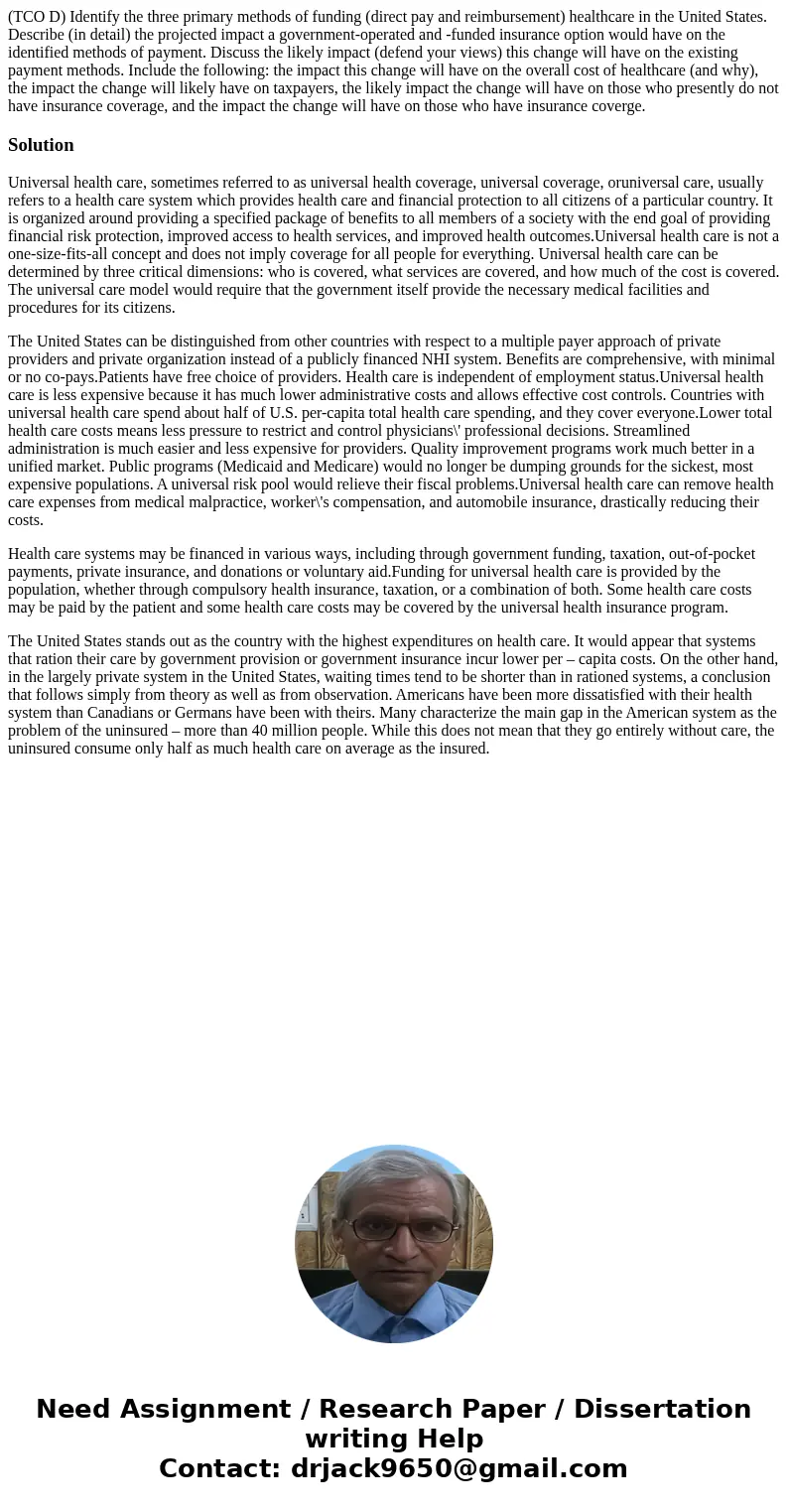TCO D Identify the three primary methods of funding direct p
(TCO D) Identify the three primary methods of funding (direct pay and reimbursement) healthcare in the United States. Describe (in detail) the projected impact a government-operated and -funded insurance option would have on the identified methods of payment. Discuss the likely impact (defend your views) this change will have on the existing payment methods. Include the following: the impact this change will have on the overall cost of healthcare (and why), the impact the change will likely have on taxpayers, the likely impact the change will have on those who presently do not have insurance coverage, and the impact the change will have on those who have insurance coverge.
Solution
Universal health care, sometimes referred to as universal health coverage, universal coverage, oruniversal care, usually refers to a health care system which provides health care and financial protection to all citizens of a particular country. It is organized around providing a specified package of benefits to all members of a society with the end goal of providing financial risk protection, improved access to health services, and improved health outcomes.Universal health care is not a one-size-fits-all concept and does not imply coverage for all people for everything. Universal health care can be determined by three critical dimensions: who is covered, what services are covered, and how much of the cost is covered. The universal care model would require that the government itself provide the necessary medical facilities and procedures for its citizens.
The United States can be distinguished from other countries with respect to a multiple payer approach of private providers and private organization instead of a publicly financed NHI system. Benefits are comprehensive, with minimal or no co-pays.Patients have free choice of providers. Health care is independent of employment status.Universal health care is less expensive because it has much lower administrative costs and allows effective cost controls. Countries with universal health care spend about half of U.S. per-capita total health care spending, and they cover everyone.Lower total health care costs means less pressure to restrict and control physicians\' professional decisions. Streamlined administration is much easier and less expensive for providers. Quality improvement programs work much better in a unified market. Public programs (Medicaid and Medicare) would no longer be dumping grounds for the sickest, most expensive populations. A universal risk pool would relieve their fiscal problems.Universal health care can remove health care expenses from medical malpractice, worker\'s compensation, and automobile insurance, drastically reducing their costs.
Health care systems may be financed in various ways, including through government funding, taxation, out-of-pocket payments, private insurance, and donations or voluntary aid.Funding for universal health care is provided by the population, whether through compulsory health insurance, taxation, or a combination of both. Some health care costs may be paid by the patient and some health care costs may be covered by the universal health insurance program.
The United States stands out as the country with the highest expenditures on health care. It would appear that systems that ration their care by government provision or government insurance incur lower per – capita costs. On the other hand, in the largely private system in the United States, waiting times tend to be shorter than in rationed systems, a conclusion that follows simply from theory as well as from observation. Americans have been more dissatisfied with their health system than Canadians or Germans have been with theirs. Many characterize the main gap in the American system as the problem of the uninsured – more than 40 million people. While this does not mean that they go entirely without care, the uninsured consume only half as much health care on average as the insured.

 Homework Sourse
Homework Sourse